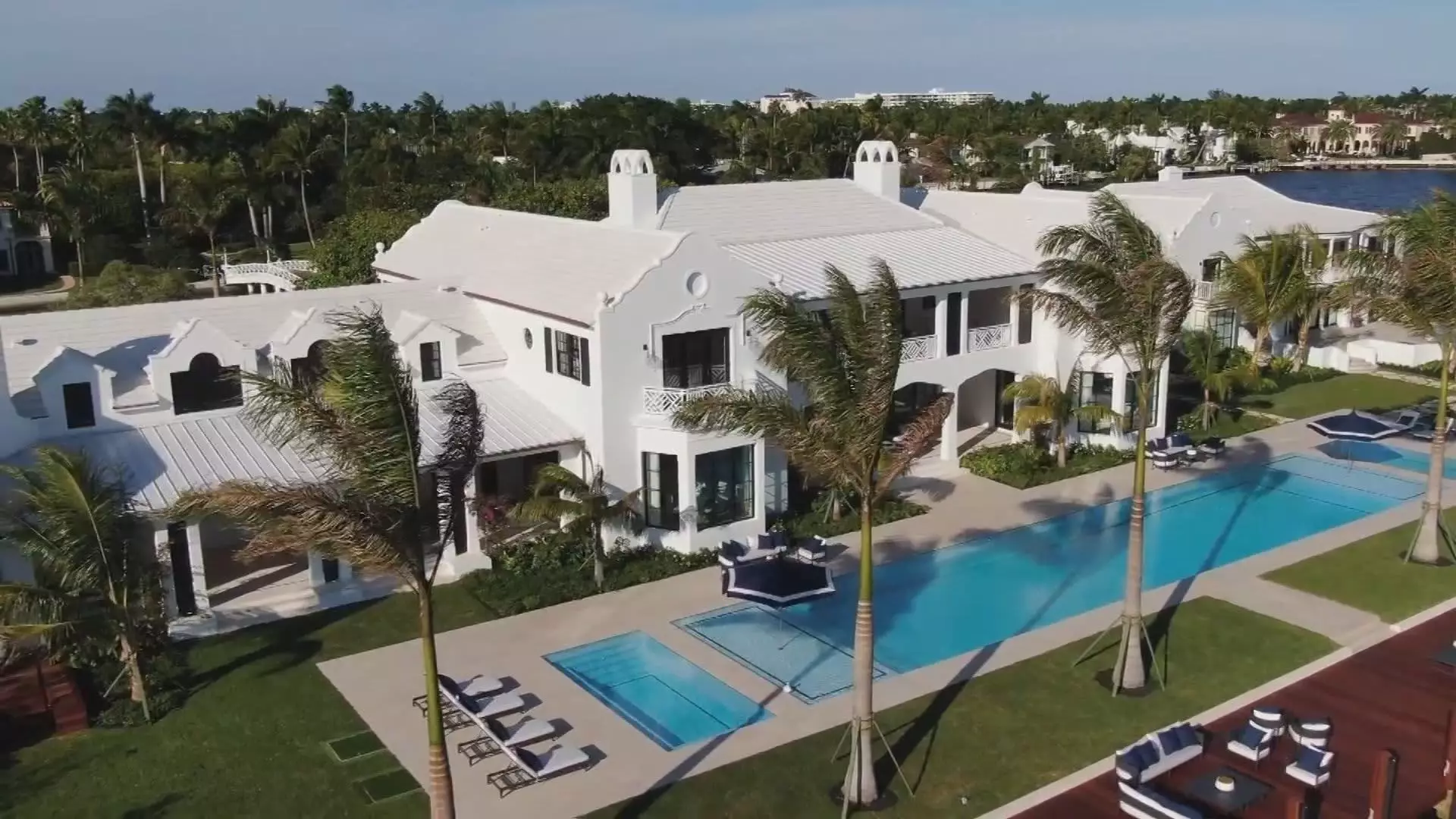The ultra-luxury real estate market has demonstrated remarkable resilience, especially in select U.S. cities, despite facing challenges in other parts of the globe. Recent sales reports reveal a wave of enthusiasm, particularly in New York, Miami, and Palm Beach, Florida, during the second quarter of this year. These locations have emerged as strongholds for high-net-worth individuals seeking exclusive properties, marking a significant shift against a backdrop of declining sales in many international luxury markets.
According to a detailed analysis by real estate consultancy Knight Frank, the market for homes priced at $10 million and above has surged impressively. In Palm Beach, sales jumped a staggering 44%, while Miami also boasted a significant 27% increase. New York, traditionally a powerhouse in the ultra-luxury space, recorded a 16% growth. This performance underscores a burgeoning appetite for high-value properties amidst a world where many luxury markets are experiencing downturns.
The luxury market’s performance was driven by notable transactions. For instance, in May, a private island in Palm Beach changed hands for an extraordinary $150 million, and high-profile developments like the Aman New York penthouse sold for $135 million in July. These significant sales illustrate not only the affluence of buyers in these regions but also their willingness to invest significantly in exclusive real estate.
New York has reclaim its title as the leading U.S. city for ultra-luxury sales, finishing the quarter with 72 such transactions, the highest figure in two years. Following closely behind was Miami, which recorded 55 sales, and notably, Los Angeles faced a contraction with a 29% decline due in large part to a recently enacted “mansion tax.” This added complexity to the Californian market but has paradoxically driven buyers to seek opportunities in regions like Florida, which remain appealing both in terms of lifestyle and tax efficiency.
Palm Beach, in particular, emerges as a focal point in these dynamics, demonstrating a thriving luxury sector that attracts individuals globally. The convergence of favorable financial markets and a diverse clientele, including foreign investors, has fortified its position in the luxury real estate arena.
While U.S. cities are witnessing a luxurious boom, the overall global landscape presents a more mixed picture. Knight Frank reports a 4% decrease in sales of properties exceeding $10 million across the eleven top luxury markets, indicating a recalibration among high-end buyers. Notably, Dubai has distinguished itself, leading the global ultra-luxury market with 85 sales and witnessing a substantial increase from previous years.
The emirate has become a magnet for the wealthy, especially from Russia and China, drawn by its amenable tax environment. This influx of ultra-wealthy buyers emphasizes a shifting paradigm in how and where affluent individuals choose to invest in real estate.
Conversely, cities like London are grappling with a sharp decline, where sales of $10 million-plus homes fell by an alarming 47%. Concerns surrounding potential tax increases for the wealthy in the U.K. have created apprehension among buyers, indicative of how regulatory landscapes shape real estate decisions in high-end markets.
Despite the fluctuations observed in global markets, there exists a promising outlook for the ultra-luxury segment moving forward. Falling interest rates worldwide are anticipated to provide a favorable backdrop for continued sales momentum. As per Knight Frank’s global head of research, Liam Bailey, a potential uptick in transaction volume is expected as these economic factors pivot in buyers’ favor.
While the luxury real estate landscape is not immune to the whims of the market, recent trends in select U.S. cities highlight an ongoing demand for premier properties. As buyers navigate a nuanced market with rising conditions in certain areas and challenges in others, the ultra-luxury property sector remains a dynamic and lucrative arena bolstered by the resilience of its wealthy clientele.

